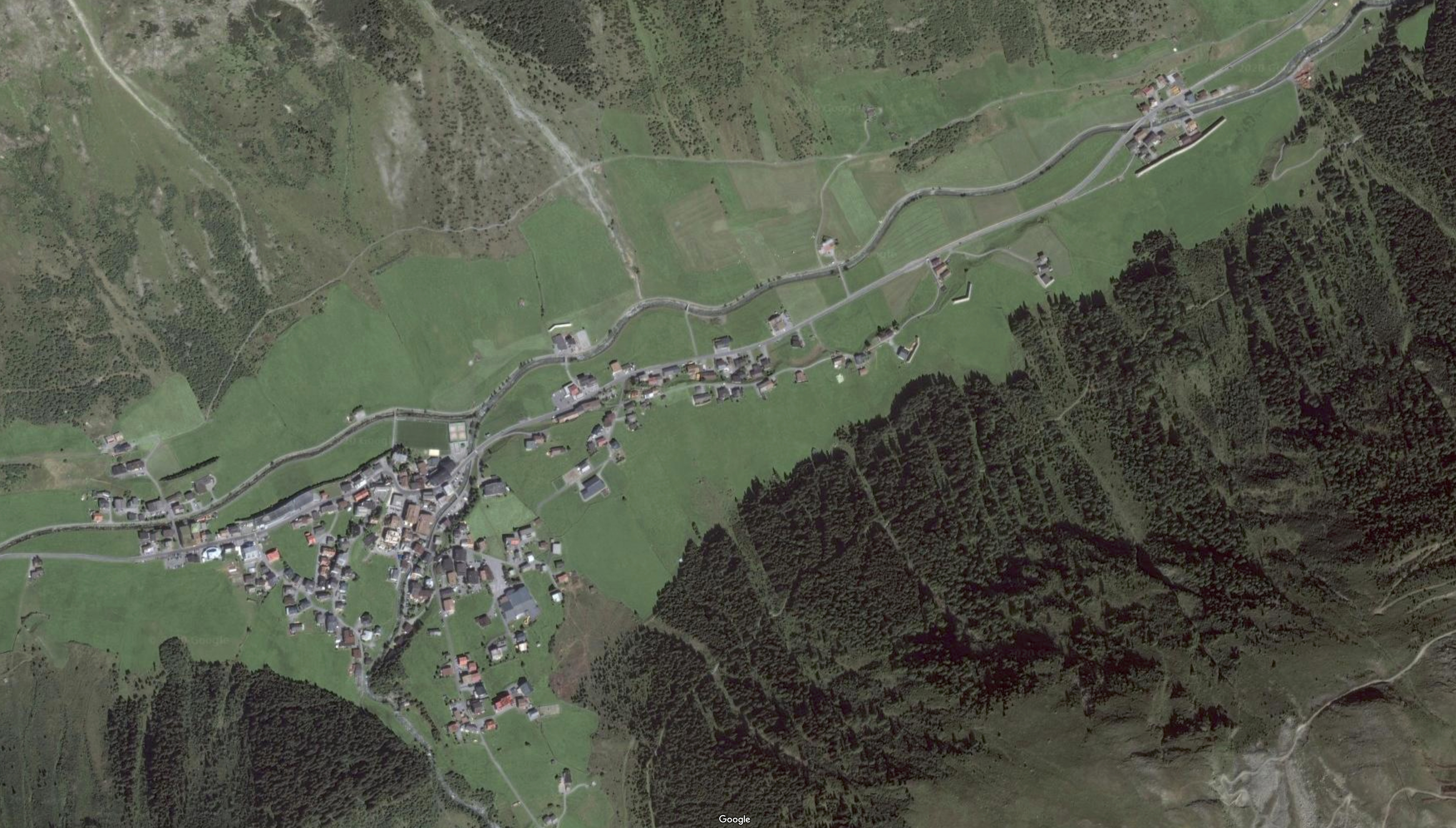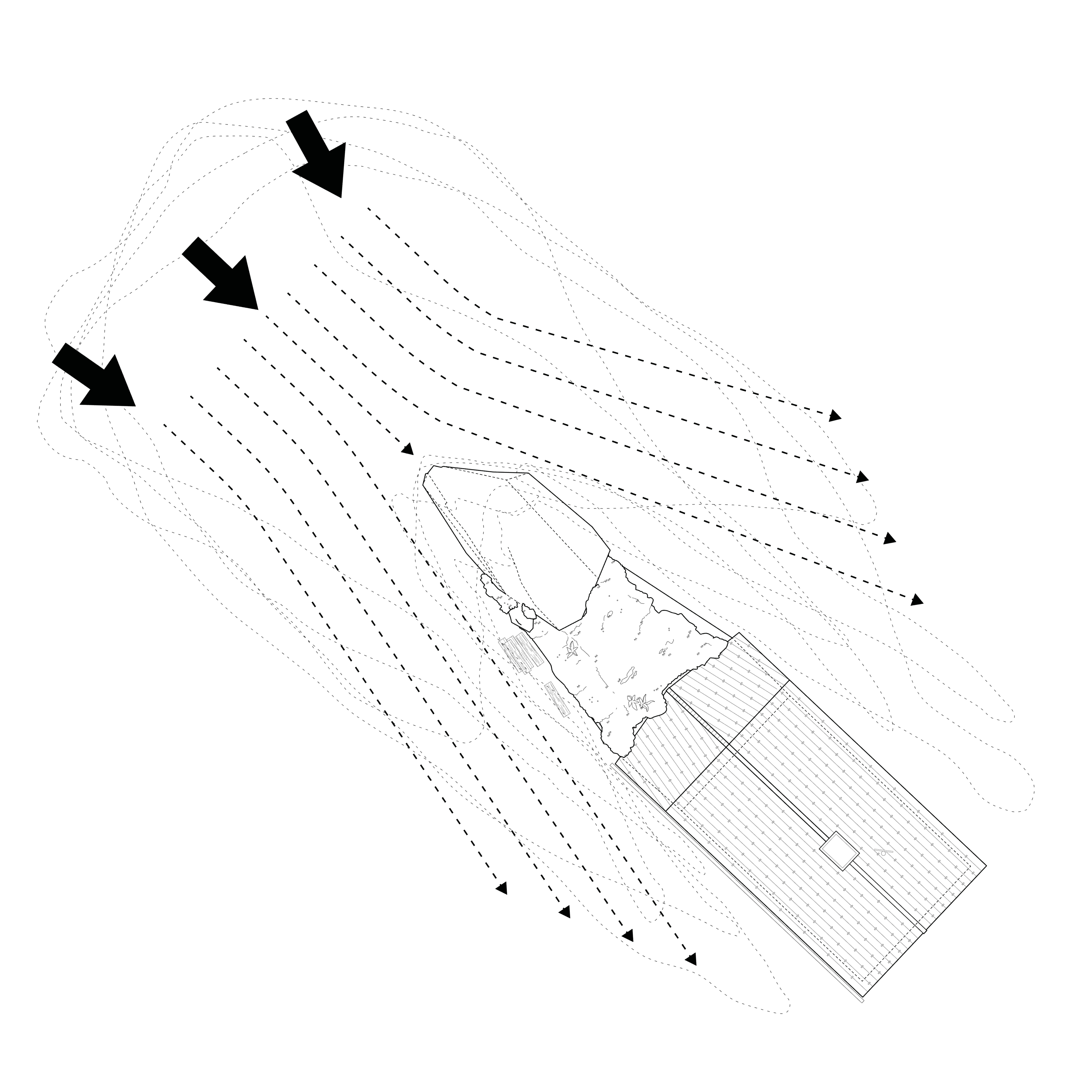Avalanche architecture
Since a series of avalanches struck the small valley town of Galtür in the Austrian Alps with increasing force, the last and most devastating in 1999, a series of concrete buffers, banks and walls have been cast into the landscape, protecting the most vulnerable zones from loose snow that threatens to tumble from the steep mountain slopes that surround the town. These fortifications have been carefully positioned in the path of potential avalanches and angled to divert and disperse the trajectory of the snow. This augmented version of Galtur is constantly being added to, with current interventions almost doubling the physical footprint of the village.
A new museum was built to commemorate the vicitms of the disaster, but also to act as a protective barrier for Galtür’s town centre. Its huge reinforced rear wall extending some 350m long and 16m high, embeds itself in the landscape and is designed to stop an avalanche in its tracks.
The drawing below exposes these invisible forces acting on Galtür and the walls built to counter them - adding to the fabric of the town much like a fragmented rampart. These strange pieces of defensive architecture have become the alpine version of the fortified city wall, protecting vulnerable valley towns against these natural forces.
![]()
Drawings and text by Ness Lafoy, 2020
Since a series of avalanches struck the small valley town of Galtür in the Austrian Alps with increasing force, the last and most devastating in 1999, a series of concrete buffers, banks and walls have been cast into the landscape, protecting the most vulnerable zones from loose snow that threatens to tumble from the steep mountain slopes that surround the town. These fortifications have been carefully positioned in the path of potential avalanches and angled to divert and disperse the trajectory of the snow. This augmented version of Galtur is constantly being added to, with current interventions almost doubling the physical footprint of the village.
A new museum was built to commemorate the vicitms of the disaster, but also to act as a protective barrier for Galtür’s town centre. Its huge reinforced rear wall extending some 350m long and 16m high, embeds itself in the landscape and is designed to stop an avalanche in its tracks.
The drawing below exposes these invisible forces acting on Galtür and the walls built to counter them - adding to the fabric of the town much like a fragmented rampart. These strange pieces of defensive architecture have become the alpine version of the fortified city wall, protecting vulnerable valley towns against these natural forces.

The filled blocks in this drawing represent avalanche fortifications built to date in Galtür. The largest structure on the left is the defensive Alpinarium museum.
(drawing: Ness Lafoy 2020)
![]()
Aerial photo of Galtür. (Google earth)
![]() This rock / house hybrid in Göschenen, Switzerland harnesses an erratic boulder as an avalanche barrier. The boulder takes the initial force of the snow, effectively splitting the avalanche in two. Reinforced concrete angled walls then divert and guide the snow’s trajectory away from the building.
This rock / house hybrid in Göschenen, Switzerland harnesses an erratic boulder as an avalanche barrier. The boulder takes the initial force of the snow, effectively splitting the avalanche in two. Reinforced concrete angled walls then divert and guide the snow’s trajectory away from the building.
(Stefan Margreth, Unesco)
![]()
(drawing: Ness Lafoy 2020)

Aerial photo of Galtür. (Google earth)
 This rock / house hybrid in Göschenen, Switzerland harnesses an erratic boulder as an avalanche barrier. The boulder takes the initial force of the snow, effectively splitting the avalanche in two. Reinforced concrete angled walls then divert and guide the snow’s trajectory away from the building.
This rock / house hybrid in Göschenen, Switzerland harnesses an erratic boulder as an avalanche barrier. The boulder takes the initial force of the snow, effectively splitting the avalanche in two. Reinforced concrete angled walls then divert and guide the snow’s trajectory away from the building. (Stefan Margreth, Unesco)

Drawings and text by Ness Lafoy, 2020